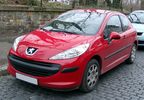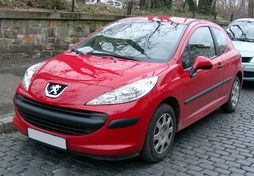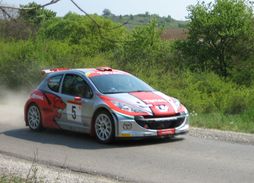The History Of Peugeot 207

The Peugeot 207 is a supermini produced by the French automaker Peugeot and unveiled in January 2006. According to JATO Dynamics, an automative market researcher, the model was the bestselling car in Europe in 2007.
The 207 was launched in France, Spain and Italy during April 2006 and later on in other European markets.
The UK launch was on 8 June 2006. Amicus and the TGWU, both unions representing workers at PSA's UK manufacturing plant in Ryton, Coventry, chose the same day to launch a campaign calling for the boycott of PSA's Peugeot and Citroën vehicles in the UK. The campaign was in protest against the company's plans to close the Ryton plant.
The 207 is designed to be the successor to the 206. However, Peugeot has decided to keep the 206 in production until 2010, though since December 2006 production has taken place in Poissy, near Paris rather than at the Ryton plant in England. The 207 is based on a modified version of the platform used for the Citroën C3, and is built in Poissy and a new plant near Trnava, Slovakia.
Initially three petrol engines were available: 1.4-litre 8v with 75 or 16v 90hp (67kW) and 1.6-litre 16v with 110bhp (82kW; 112PS). From late 2006, the 1.4 & 1.6 16v models were replaced by the new 1.4 vti 95bhp (71kW; 96PS) and 1.6 vti a 120bhp (89kW; 122PS) Valvetronic engines. Two turbocharged versions, one with 150bhp (112kW; 152PS) , and the other with 175bhp (130kW; 177PS) were also added to the range. The latter three engines result from the cooperation agreement between PSA and the BMW group. The diesel-powered engines available are a 1.4 litre 70hp (52kW) or a 1.6 litre HDi with maximum output of 90 or 110hp (82kW), the latter with the addition of an intercooler.
The 207 is available as a three- or five-door hatchback, a 207 SW Station Wagon and a 207 CC coupé convertible. A GTI version is available with the 175hp (130kW) turbocharged 1.6 litre engine.
It has sold well in Britain, being the sixth best selling car overall (and third in the supermini sector) in 2007 with more than 67,000 examples being sold.
In May 2008, Peugeot's Brazilian branch announced it would not manufacture nor import the Peugeot 207 to Brazil, but instead it would change some elements of the 206 already in production, arguing it would be impractical to do otherwise. The car features a new front end, new rear bumpers and tail lights, designed to resemble the European 207, along with a new dashboard in the interior. Minor changes were made to mechanical parts such as the suspension and gearbox. The car is now being made in Brazil and Argentina.
In order to differentiate this modified version of the 206 from the European 207, Peugeot planned to name it “Peugeot 207 Brasil”, but soon dropped the “Brasil” from the name, as this decision gained generally negative reactions from the media. The Brazilian 207 has also been criticized because it was perceived essentially as a facelifted 206, despite Peugeot's efforts to market it as an entirely new car and even selling it at a higher base price. It was released in Brazil under the name of "207 Brasil" and in Argentina under the name of "207 Compact" both in late August 2008. Peugeot also plans to release station wagon and sedan versions of the car.
The sedan version, based on the 206 SD sold in Iran, is expected to be released in December 2008 and will be named “207 Passion”. It has not been as criticized as the hatchback version, probably due to the fact the 206 SD never saw a release in that country.
Peugeot 207 Epure
The Peugeot 207 Epure was a concept car presented at the Mondial de l'Automobile 2006 designed to preview the 207 CC coupé cabriolet which followed. The 207 Epure was fitted with a sophisticated hydrogen fuel cell.
207 RCup
At the 2006 Geneva Motor Show Peugeot also unveiled a sporty concept car based on the 207 and badged as the 207 RCup. This Super 2000 version is powered by a 2.0-litre petrol engine with maximum output of 280hp (209kW) and is intended as a successor for the 206 World Rally Car which was successfully used by Peugeot in the World Rally Championship, where it helped the team winning the manufacturers' championship in 2000, 2001 and 2002.
New 207 WRC
A version of a 207 is used in the P-WRC, by Swede Patrik Sandell, and his car may be the gateway to Peugeot entering the WRC series with a new 207 WRC car like they used to with the Peugeot 206. There have been rumours floating around of a possible re-entry by peugeot into WRC, but nothing has yet to be confirmed as PSA Peugeot Citroën, who are Peugeot's parent company. PSA already has a team in the championship by means of the Citroën C4 and it would seem a waste of money to have two teams under the flag of the same parent company.
Peugeot 207 S2000, Possible base for a 207 WRC.
From Wikipedia, the free encyclopedia
More About Peugeot 207


|